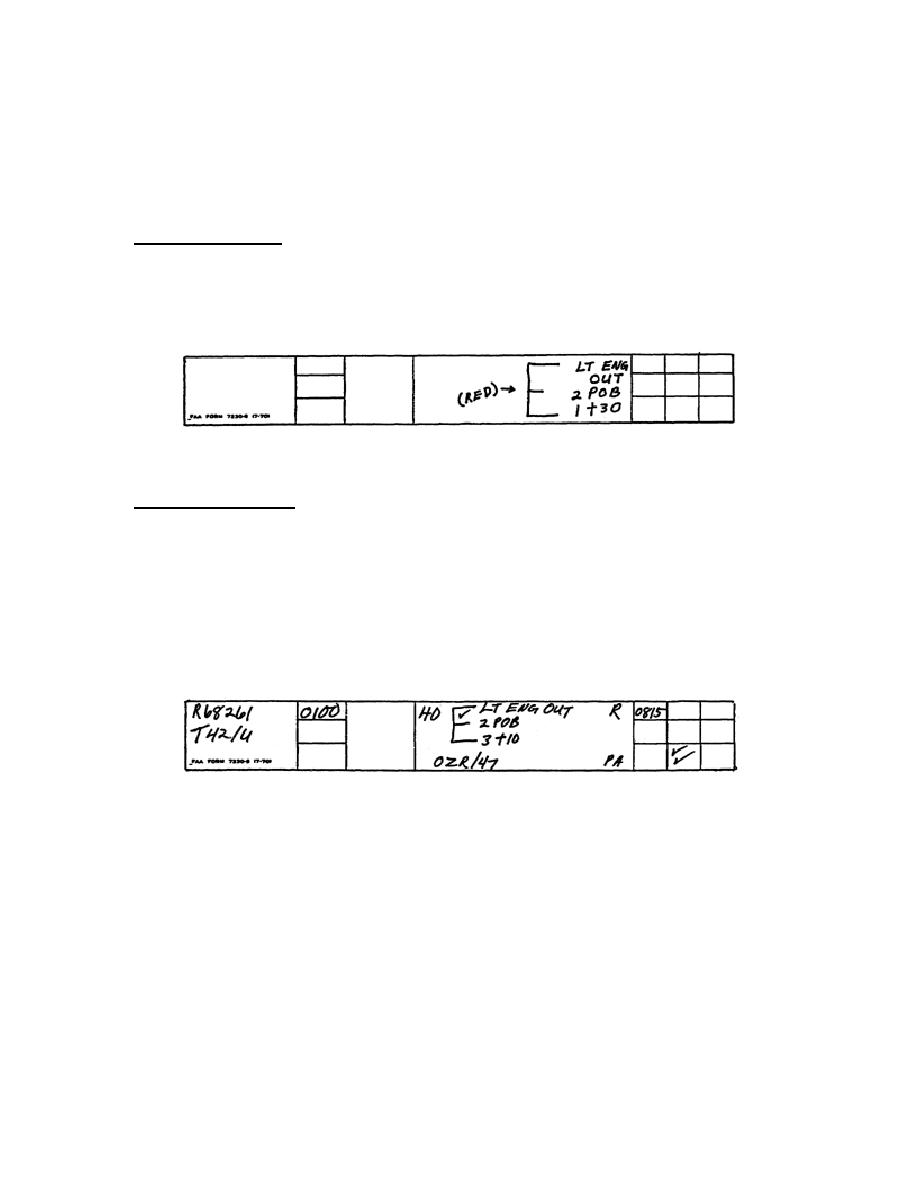
under abnormal circumstances and will need your most expert assistance. Confine your efforts to the
area of your expertise unless other assistance is requested by the pilot. Controllers are expected to use
their best judgment.
1. FLIGHT DATA POSITION
a. Inbound Emergency. Your first indication that an emergency exists is probably when you see
the arrival controller mark the strip with a large red letter "E" in Block 9. You must immediately relay
to the tower the nature of the emergency, number of personnel on board, and amount of fuel remaining
in time. This information is placed on the flight progress strip by the arrival controller (Figure 4-1).
Additional information will be provided to the tower as necessary.
Figure 4-1. Emergency Information Recorded on the Flight Data Strip.
b. Outbound Emergency. Again, the first indication that an emergency exists is when the arrival
controller marks the strip with the large red letter "E." The flight data controller must relay to the tower
the same information as before. In addition, you must quickly prepare an arrival strip, transcribing the
information from the departure strip. That information includes the aircraft call sign, type, equipment
designator, assigned beacon code, altitude, and all available emergency data. A letter "R" is placed in
the top right corner of Block 9. The radar contact time is placed in Block 10. This time is the same as
the departure time on the departure strip. An estimated time of arrival (ETA) is computed and passed to
the tower. The ETA is the time the aircraft declares an emergency plus the flying time to the airport
(Figures 4-2 and 4-3).
Figure 4-2. Coordination with the Air Route Traffic Control Center (ARTCC).
50
AV0914


 Previous Page
Previous Page
